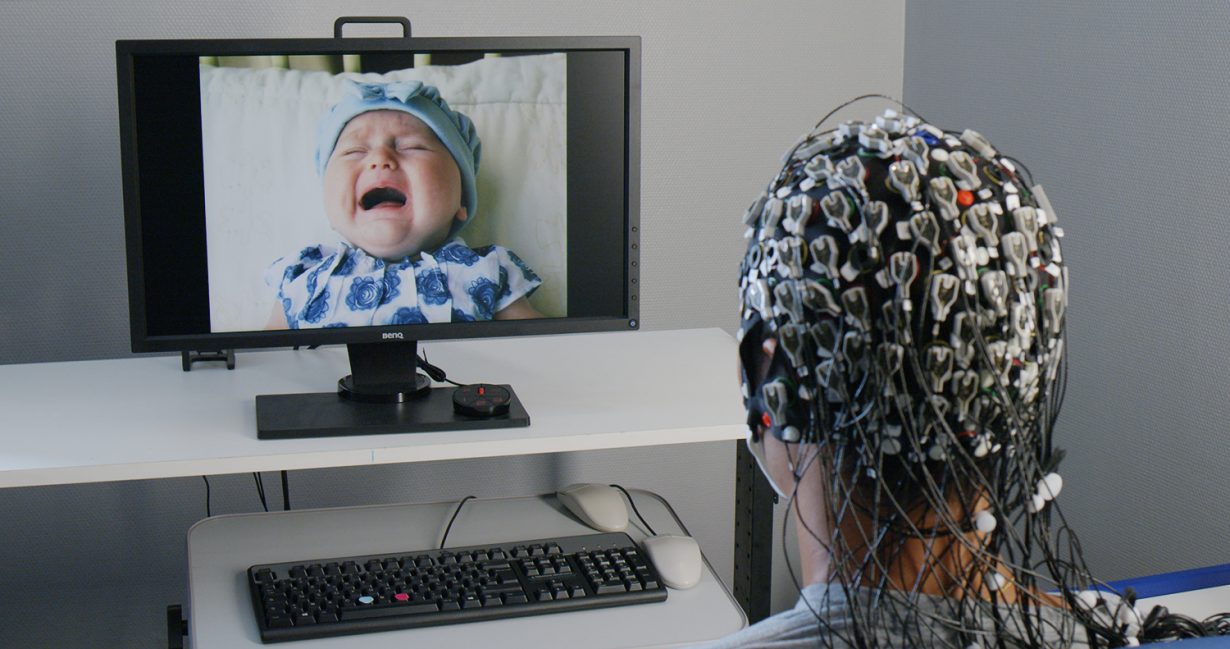This DIS-curated edition offers little respite from the spectre of our imminent demise
Devised as a documentary from the future, New York collective DIS’s Everything But The World (2021) reflects on the brief existence of the human race. At the Centre d’Art Contemporain Genève, the 38-minute work is installed in a huge room, made chillier, in the installation, by the excessive whirring of fans overhead. To watch the video I swaddle myself, pathetically, in one of the heated blankets on the floor. Narrated by an incredulous radio host (played brilliantly by Leilah Weinraub), Everything But The World presents our demise as inevitable; our achievements laughable. “The humans weren’t a disaster,” says Weinraub with palpable disdain, “They were a whimper. A hardly audible sneeze.” If the film offers any hope at all, it is by stressing Earth’s ability to endure without us.
The scabrous humour and almost bitter tone of Everything But The World recurs throughout this year’s Biennale de l’Image en Mouvement. Titled A Goodbye Letter, A Love Call, A Wake-Up Song, the 17th edition of the biennale is cocurated by DIS with Andrea Bellini, the centre’s director. As always, the exhibition’s focus is on new commissions, from established artists including Simon Fujiwara, Hannah Black and Juliana Huxtable to emerging Swiss artists like Giulia Essyad and Sabrina Röthlisberger Belkacem. Many of the artists commissioned have already collaborated with each other, as well as with DIS. Because of this, people and ideas recur from one work to the next. At its best, this intimate, relational quality lends the biennale an inner coherence that pushes back, reassuringly, against the exhibition’s often-planetary scope.

the artist/ADAGP. Courtesy the artist and Kamel Mennour, Paris & London;
König Galerie, Berlin, London & Seoul; and Metro Pictures, New York
Despite embracing speculative fiction and absurdism, the biennale offers little respite from the spectre of our imminent demise. This is hardly surprising, given that most of the work was devised within the context of a global pandemic. Camille Henrot’s Saturday (2017) is a notable exception, considering human hubris and the lure of salvation through the complicating lens of loss. Shown on a vast LED wall in a subterranean concourse of Genève-Champel train station, Ricardo Benassi’s similarly poetic Daily Dense Dance Desiderio (DDDD) (2021) presents a daily succession of 365 short texts, composed by the artist during lockdown with the help of AI. The day I visited, the message read: ‘That chill you feel inside – that ice crystallized deep in your bones, it has nothing to do with the weather’. Here I felt caught out by the AI, oddly seen, by something like an end-of-times horoscope.
The genre of the TV pilot is a thread running throughout the biennale, with many videos taking the form of a concise, standalone episode. A hyperactive mishmash of TV formats, including cookery and police interrogation, Will Benedict and Steffen Jørgensen’s The Restaurant, Season 2 (2021) is a fantastical study of digital excess, while Emily Allan and Leah Hennessey’s Byron & Shelley: Illuminati Detectives (2021) imagines the Romantic poets as unlikely protagonists in an extremely queer crime caper unfolding on the shores of Lake Geneva. With nods to Amy Heckerling’s Clueless (1995) and the aesthetics of corporate and MTV culture, Mandy Harris Williams’s Couture Critiques (2021) is a smart and self-reflexive take on the figure of the public intellectual in contemporary life. As pilots, these are short and snappy statements of intent. Their success rests on their ability to promise a future for themselves.

Other works here use digital technologies to fashion new worlds. Penumbra (2021), Black and Huxtable’s video made in collaboration with designers And Or Forever, reimagines a live performance of the same title from 2019. Through its digital translation, the performance – a wordy, funny trial of a pangolin, accused of (among other things) “the murder of everything” – acquires a startling uncanniness that emphasises the absurdity and cruelty not only of legalese, but of language itself. Similarly, in Essyad’s Bluebot: Awakening (2021) digital tools create the possibility for a new matriarchal culture. There is dread, then, but there is something insistently utopian too.
Of course, since the biennale’s first edition, video art has become ubiquitous within largescale exhibition-making. What sets the Biennale de l’Image en Mouvement apart is the opportunity it grants moving-image artists to create something entirely new and at scale. With DIS as cocreators, the exhibition is by turns bleak, frustrating, tedious and LOL funny, but always insistently contemporary. Favouring excess, the biennale turns a mirror to our ceaseless consumption, hubris and self-aggrandisement, imparting images that are often both uncomfortable and uncomfortably accurate.
The Biennale de l’Image en Mouvement is at Centre d’Art Contemporain Genève until 20 February
